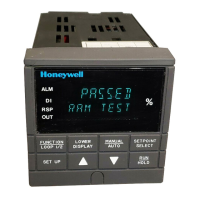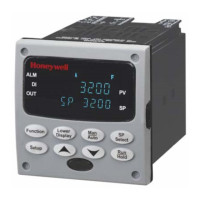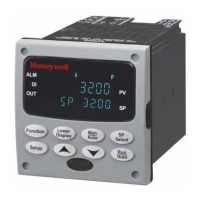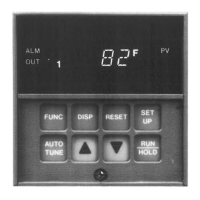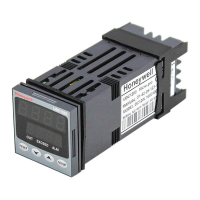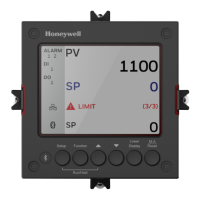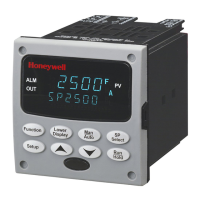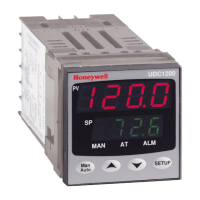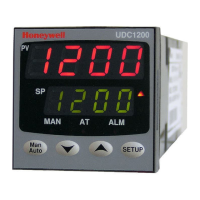Monitoring and Operating the Controller
242 UDC3500 Universal Digital Controller Product Manual 3/07
Usually only one output is used to add more or less enriching gas (typically natural gas)
to the furnace’s base atmosphere, which has a relatively low carbon potential. The
enriching gas then raises the carbon potential to the desired level. There are occasions
when it is desirable to use dilution air in order to lower the carbon potential instead of
enriching gas to raise it. In those instances, a second output from the controller can
provide this function by configuring duplex control. When duplex proportional control is
used, a different set of PID tuning constants is used for the dilution air than those used for
the enriching gas.
Although the temperature used for these Carbon algorithms is normally a live value read
by Input 2, it may also be configured as a fixed value. The fixed value selection is useful
for when an Automotive Sensor is used, as these do not contain a thermocouple sensor.
Carbon Potential Diagram
Figure 4-6 illustrates a typical application for carbon potential control.
f(x) f(x)
PID
E/P
CV
Carbon
Probe
O
2
Sensor
Carburizing
Furnace
%
Carbon
P
%
Carbon
Calc.
Output
Enrichment Gas
• SP
• 2SP
• 4SP or
• RSP
Input 2 Input 1
UDC 3500
millivolts
CP
Input 3 —
Optional Online
CO Compensation
• 3SP
temperature
Thermocouple
Figure 4-6 Carbon Potential Control
Percent Oxygen
Percent Oxygen control requires two analog inputs. Input 1 actuation is automatically set
to Oxygen when the Percent Oxygen Algorithm is configured. Input 2 may be any input
actuation, but it is normally a type K, R or S thermocouple input.
All calculations are performed by the Controller with Percent Oxygen shown as the PV
display. The actual reading of each analog input is available for viewing on the lower
display.

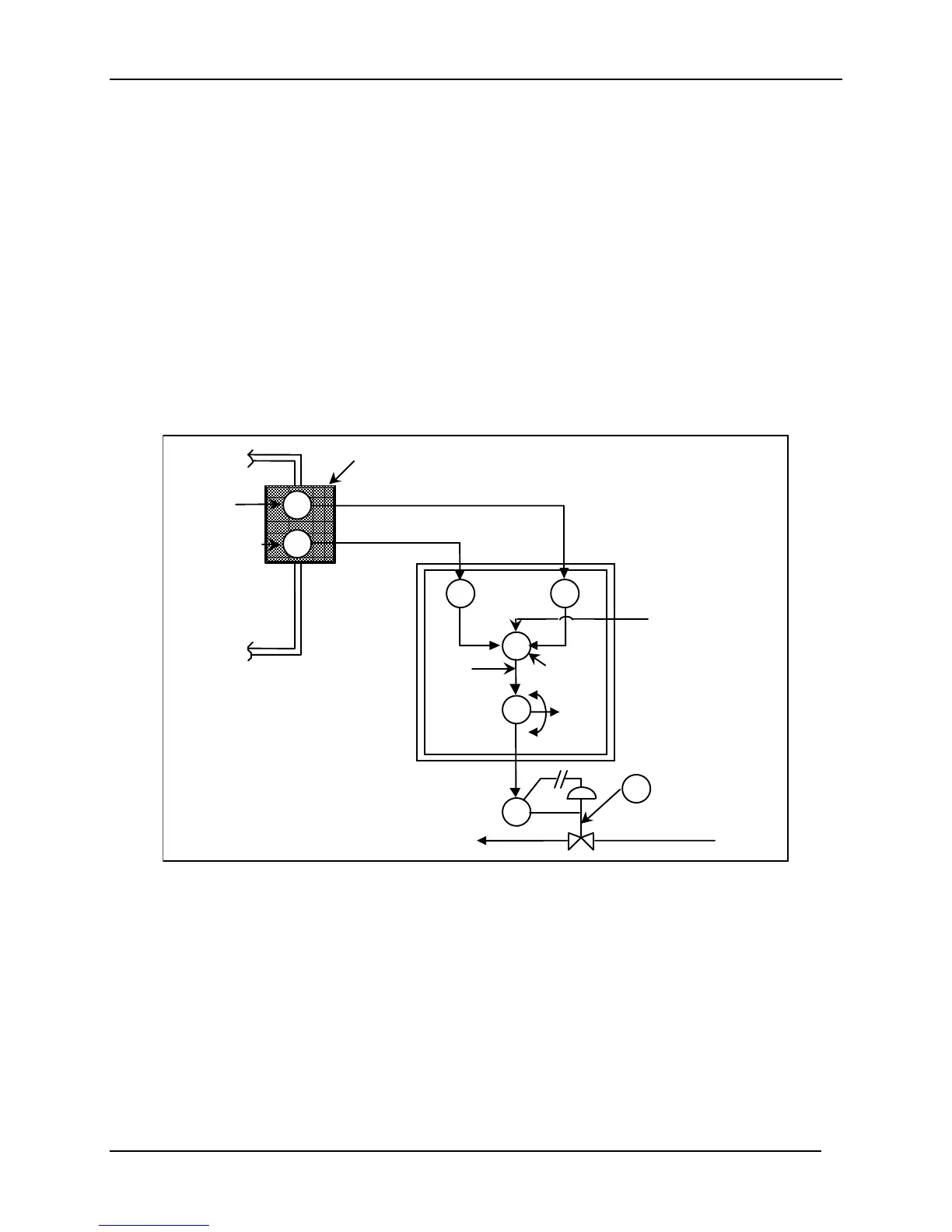